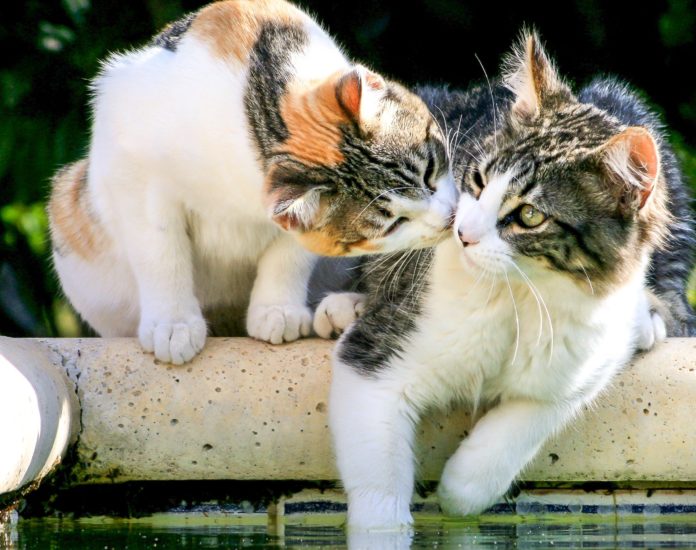Feline calicivirus (FCV) is found in up to 40 percent of cats. It commonly causes a self-limiting upper-respiratory infection, but a rare, virulent strain can cause fatal inflammation of the liver, intestines, pancreas, and cells that line the blood vessels.
At the 2018 Fred Scott Feline symposium held at the New York State College of Veterinary Medicine at Cornell University, Dr. Regina Hofmann-Lehmann, world-renowned specialist in feline infectious diseases from the University of Zurich, Switzerland, spoke about feline calicivirus. In general, calicivirus infection may occur in cats with other infections, including herpes and mycoplasma.
Symptoms
FCV is highly contagious and almost always causes signs of illness. Fever and ocular/nasal discharges are common, along with sneezing. A classic sign of calicivirus is ulcers in the mouth, including on the gums, hard palate, and tongue. Cats with these ulcers often drool, act as if their mouth is painful, and may not want to eat or drink.
Many cats with calicivirus infections will have swollen, painful conjunctiva around the eye, often with clear discharge. Discharges from the eyes and nose may turn purulent, especially if there is secondary bacterial infection.
Certain strains of the virus may show a tendency to progress to pneumonia or to cause lameness from painful joint arthritis, especially in kittens.
“Cats with chronic stomatitis and shifting leg lameness may have calici infections. Maine Coon cats seem to have a high risk for FCV infection, which may be associated with early periodontal disease in that breed,” says Dr. Hoffmann-Lehmann.
Cats who appear healthy cats and cats who have recovered from infection may be carriers. These cats may intermittently shed the virus for the rest of their lives while not showing illness themselves. Some cats will have chronic low-grade conjunctivitis as a residual effect.
The virus is spread from cat to cat by saliva, nasal droplets, and in rare cases in the urine and/or feces. Since the virus can survive well in the environment, shared dishes, toys, litter boxes, and bedding can be sources of infection. Serious disinfection efforts are needed to decrease the amount of virus in the environment. Under ideal conditions, FCV may persist for as long as a month in the environment.
Diagnosis and Treatment
Diagnosis is best done by recognition of classic clinical signs and by collecting samples to identify the virus using PCR (polymerase chain reaction) techniques. There can be false negatives, so a follow-up is recommended if the clinical signs match the disease even when the initial test is negative.
Treatment of cats with calicivirus infections is mostly supportive care. Antibiotics may be prescribed if there are signs of secondary bacterial infections. Cats with severe ocular lesions will need gentle cleaning of the eyes and ointments multiple times a day. Nasal discharge must be cleaned multiple times per day. Humidification of the air may help.
With oral ulcers, an infected cat’s appetite may decrease. Offering foods that are easy to eat (think mush and softened foods) and that have strong odors may stimulate a cat’s appetite in these cases. Adding the juice from a can of tuna to her food, for example, may help. Some cats may require hospitalization for fluid therapy and nursing care.
Systemic FCV Infections
Virulent systemic FCV infections may result in severe whole-body inflammatory reactions. Affected felines may suffer skin edema and ulcers in various body parts, especially the head and paws. Fevers are usually noted. Internal organs are commonly affected. Most cats with this version of the virus will die. There is a milder form of this illness called “paw and mouth disease” with a lower mortality rate.
The European Advisory Board on Cat Disease (abcdcatsvets.org) suggests reducing the size of cat populations in a group to minimize the chance of infection. This means keeping three or fewer cats in a shared a common area. Strict disinfection protocols must be always be followed.




